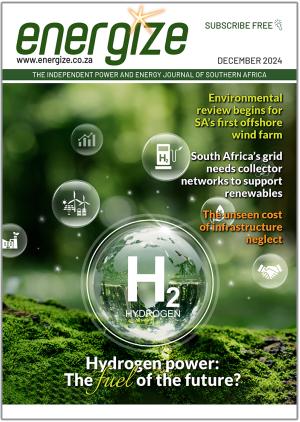by Roger Lilley, Energize
Eskom warns that load shedding will be with us for a long time yet because so many of the utility’s power stations are offline for planned and unplanned maintenance. The utility has already overspent its budget for diesel fuel for its peaking plant and cannot afford to carry on using them in the same way as before.
Between January and 11 November 2022, South Africa experienced 155 days of loadshedding. More than half of those days were at Stage 3 or higher. Stage 6 was applied on six days over the same period. The power utility is now predicting that load shedding will continue into the foreseeable future and that 2023 could see load shedding imposed for as many as 193 days.
At its recent State of the System briefing, Eskom acknowledged that while load shedding causes significant hardship for many businesses and inconvenience for all South Africans, it has become more necessary than ever before.
This is because the number of generating units which are out of service, or offline, continues to grow. Eskom owns and operates 14 coal-fired power stations in addition to its nuclear power plant, its diesel-powered peaking plants, and its renewable energy power stations.
Most of South Africa’s electricity is generated at these 14 power stations. However, frequent breakdowns, return-to-service delays, and repeat failures has resulted in Eskom’s overall energy availability factor (EAF) falling to below 59%. In fact, only two of those 14 power stations have EAFs of 70%.
This situation is worsened by the major failures at Medupi and Kusile. At Medupi, in August 2021, an explosion resulted in the complete loss of generating Unit 4; while at Kusile, in October 2022, a section of the flue gas desulphurisation (FGD) duct of Unit 1 collapsed and is resting on the FGD ducts of Units 2 and 3 which all share the same chimney. Units 1, 2 and 3 are all offline and are expected to remain offline for months.
Over utilisation of working units
All of the above means that those units which are operating properly are being pushed hard to supply the country with as much electricity as possible in order to keep load shedding down to lower stages and for shorter periods. The net result of this, however, is that the energy utilisation factor (EUF) is rising to unacceptable levels. The power utility reported that the EUF of the operational units is now over 90%.
To understand the seriousness of the situation, one should consider that the EAF should be between 70 and 80%, while the EUF should be 60 to 70%. These two metrics should not be viewed separately. The lower the EAF, the higher the EUF has to be to keep the lights on. A high EUF puts the system under threat of collapse since the entire network is powered by a smaller number of generating units. Conversely, a higher EAF would reduce the EUF and provide Eskom the opportunity to maintain the units appropriately and timeously.
Load shedding will continue into the foreseeable future and that 2023 could see load shedding imposed for as many as 193 days
Recognizing the conundrum, the minister of Public Enterprises, Pravin Gordhan, who had recently appointed a new board to oversee Eskom, gave that board a target of reaching an EAF of 75% within two years.
But how would Eskom increase its EAF? The solution, we have been told repeatedly, is by adding additional, reliable, electricity generation capacity. Since Eskom cannot afford to build new power stations, the extra power would have to be provided by the private sector.
Thus, Gwede Mantashe, the minister of the Department of Mineral Resources and Energy, decided to call for bids for 2000 MW of generation under what he called the Risk Mitigation Independent Power Producers Procurement Programme (RMIPPPP). That power has not been forthcoming and the amount called for was half or a third of what Eskom actually needs for 'breathing room' to take power plants offline for thorough maintenance. It should be remembered that a unit would be offline for 86 days for a general overhaul.
Currently, the power utility is focusing on six of its best-performing power stations for regular maintenance. These are Tutuka, Kendal, Duvha, Majuba, Matla, and Medupi.
Eskom faces many challenges. It has serious financial difficulties because of widespread non-payment and theft of electricity. This, despite electricity tariffs being lower than the utility actually needs. For years, Eskom has said that to operate successfully, it needs cost-related tariffs. Now it needs that plus to recoup the R52-billion owed to it by a number of municipalities. Internally, it faces challenges relating to fraud and corruption, something the utility calls an “untreatable disease”.
Although load shedding costs the utility in lost sales, it gives Eskom the opportunity to replenish the upper dams of its water-based energy storage systems and avoids the additional cost of diesel.
Eskom says it has no choice but to impose load shedding to balance supply and demand. Unless and until additional capacity becomes available, the EUF will continue to rise. Should more generating units fail, and the EAF continue to decline, load shedding will become more frequent and at higher stages of load reduction.
Send your comments to rogerl@nowmedia.co.za















